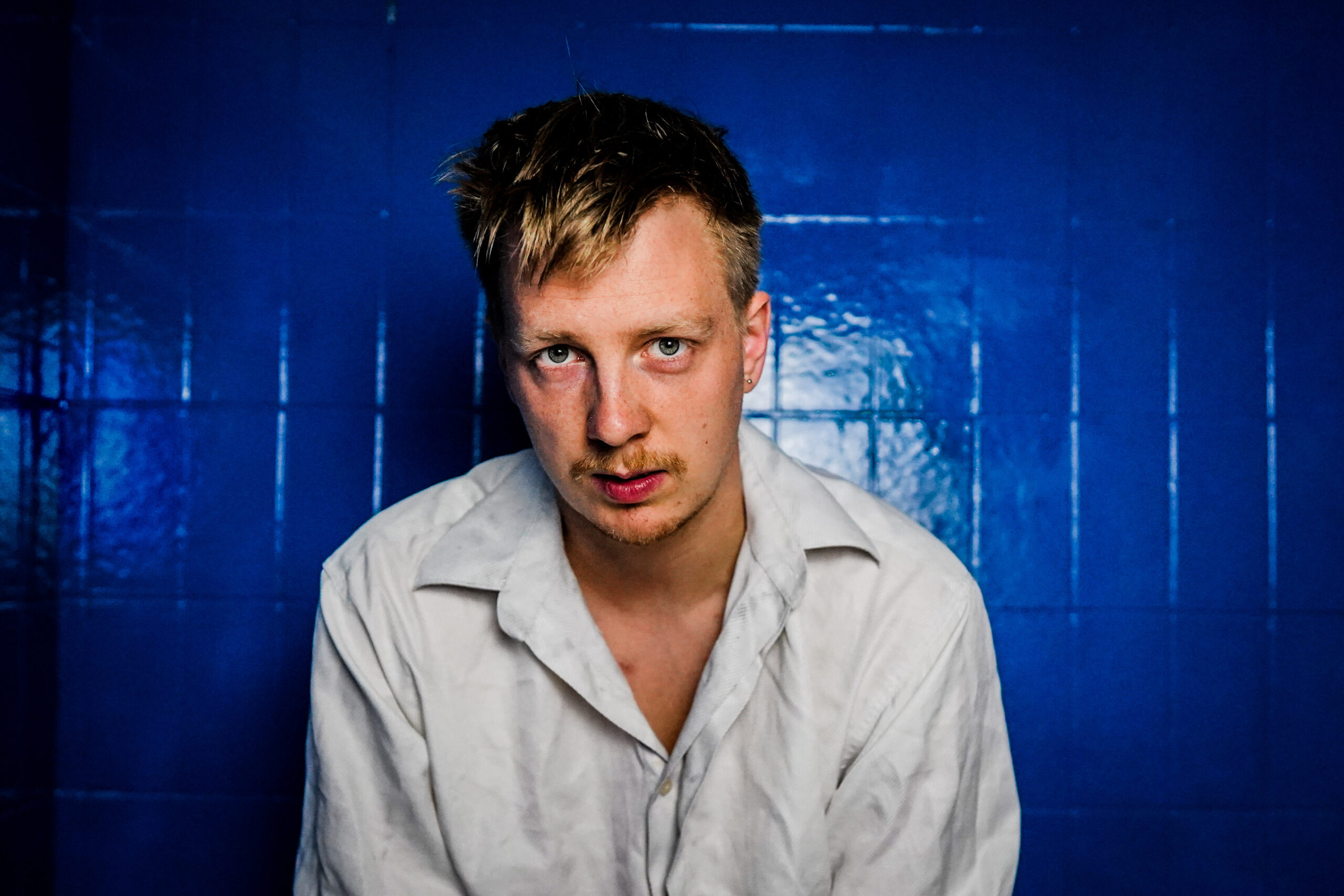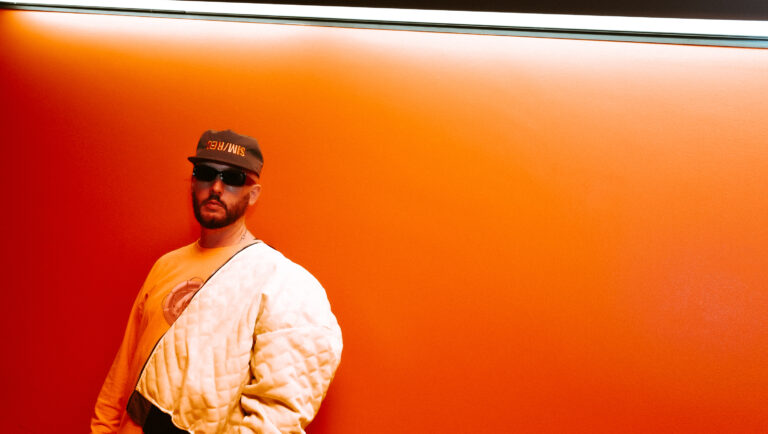Martijn Holtslag is changing the game. The multi-talented Dutch MC/producer and filmmaker transforms his vision into unapologetic soundscapes and unforgettable scenes and visuals. From underground anthems to his soundtrack on the trailer for the popular video game Borderlands 3, KNARS is delivering a sound that’s heavier and more intense than ever.
Fresh off the success of his latest album Don’t Believe Everything They Say, KNARS creates a musical soundtrack made for the dancefloor and built for a worldwide revolution. Blurring the lines between D&B, EDM, Garage coupled with his raw political expression the album holds are rare space within dance music fusing genres and breaking down barriers and ultimately, uniting.
With nearly two decades of artistry behind him, the mastermind opens up about his journey and the ethos that shapes his impressive body of work, carrying an authentic and vital musical message.
Where did you first start your music project?
My music project started earlier on when I grew up in the countryside and I basically only had a computer with bad internet. I lost myself in making beats and that production got out of hand, and I loved movies, so started filming as well. So now I make videos and short films alongside the music, and that’s now that I live in Deventer. It’s really getting out of hand.
I was curious about the videos. Are they your own productions with your concept behind them?
Yes they are. I used to work a lot with one guy. We won a Berlin music video award together, but he started his own café, he’s living his dream.
So I’m on my own. I have to say that the market has changed radically over the last five years. And of course, over the last 20 years with going digital and stuff, music videos used to be really important, first for television purposes and being broadcast there, and then for posting on Facebook and stuff.
But the more TikTok and Instagram Reels and YouTube Shorts have taken over, it’s really hard to get somebody engaged to watch a full five-minute music video. To be honest, it’s been a long time since I watched one myself, so I do think it’s an inevitable future. I haven’t fully reckoned with the fact that creators have to think as marketeers and influencers to be seen. It’s not what we’re here for.
I’ve made a few music videos though, that I’m still going to release this year and next year, but it’s still a bit weird how that changed, and how it’s all about short, 15-second viral footage now.
How would you describe your mix of genres?
We’ve been doing a lot of genre mixes. From UK Garage to Neuro to more vocal-rap-protest tunes. That’s a really interesting topic you’re bringing up there because it’s our strength and our weakness.Spotify playlists are so mood-based that it’s harder if you’re a leftfield artist who mixes a lot of genres up.
If you would just imagine Pendulum or the Prodigy starting out now with the music, they wouldn’t fit in any playlist..
Maybe we should just pick one, but on the other hand, the weird thing is we’re playing live with a live band, and every time we play, it gets crazy.
So if you would ask me to describe it, I would think it would be like UK bass breakbeat music, so it’s really bass-heavy, trying to do neurofunk influences and everything, but it’s breakbeat.
So we do. I try to stay away from house a bit more, trying it a bit more. Like breakbeats and hip hop as it leaves more room for lyrics.
I think that’s the fun thing about what you’re doing, that you bring that unique element because you do your own. You write your own lyrics. How long have you been doing that?
I’ve been in it for, I think, twenty years. I started rapping, living in the countryside. I had so much time on my bike to school, to think and write, I performed as a rapper on live television and made it to the finals of the National Slam poetry competition as well. That was a while ago. Currently I’m more into rebellion and revolution because I feel like the world is going so mad right now. It’s of course what this latest single is about, but I think it’s really weird what’s happening in the UK, the US, and the Netherlands too.
You seem to incorporate that and express yourself through the music. And with the band, how is that coming along? Is that something that you’re translating that, say, the album and then taking that and translating that with a live band with the latest album? Or is that just a side project?
We have two different shows. I’ve been in a deep development project through the European Union to make to translate my music to the other senses. So, translating it, actually, it’s a project that originated from translating music to deaf people, which sounds impossible, but that becomes a really good exercise on thinking through what your music and what you’re saying and how you can immerse your audience in every sense. So, that’s where this lyric video that we currently have originated from because I felt like the message of our music is so important. I really feel like we should translate that to the stage. Especially in bass music, it can often be escapism, just get out and party and not think too much about it. I think the lyrics are extra important.
With the live show, we developed one, and we haven’t played it for a long while because it’s pretty expensive, but it’s basically the narrative for my next album, I think I would love to talk about it, but I think we would go really off-topic. But I can’t say that it’s basically about channeling frustrations and trying to heal them and heal yourself and get into a mindset. So, we incorporated a bit of breathwork in the live show, we had props and literal demons with masks that we designed, and we were doing a meditation exercise.
They would… I would defeat them by channeling my own thoughts. That was the narrative.
How many people make up your band?
Right now we play with four, and sometimes we invite guest musicians. I think I’ve become a bit more, maybe hard-core or militant about the message or what I want to say about the bass design sounds. So, you can have ten musicians, but at a certain point, it felt so dishonorable to just have them play a few notes and a unison brass team instead of having their full musicality expressed. So that’s why I’m trying to be more sparse with what kind of musicians I involve. So now we’re four.
Tell us about your artist name?
KNARS comes from Knarsetand, which is a teeth-grinder in Dutch. Which is where the music comes from and what I believe it should sound like.
Do you have any favourites on the latest album?
Absolutely. There’s the song “Wears Your Head at”, which is on it, which I really love because of its outspoken message. And there’s a UK garage tune, “Under Your Spell”, which I really love. How simplistic and minimalistic the bass is going on there. That’s what I want to have. That’s what I would listen to and would like if I would hear it for the first time.
How about “World is Burning”. Can you tell me about that one? The message behind that one?
The line is basically ‘the world is burning, but at least the weather is nice’, which is a weird juxtaposition of being a bit too cynical about that we can’t do anything, but trying to stay sane by just trying to enjoy at least the warmer weather.
So it’s about knowing how fucked up it all is and being a bit powerless to really change it. But like in our individualistic society, we’re constantly being told to make the best of your day. Live every day as if it’s your last (while the corporations are not held responsible). Sort of encouragement and, in the end, maybe that’s all we can really do. So the song is basically a lot about all the critique and feeling that is powerless, and it’s about the inner desire to change the world, make it better. It’s all being so complicated right now. It’s so hard to really make any effective change as an individual.


